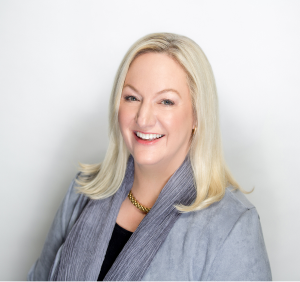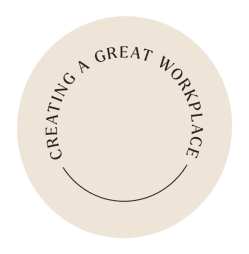This month, we are continuing in our communications series with an interview with a dear friend of mine and founder & CEO of Gagen MacDonald, Maril Gagen MacDonald. Maril was recently inducted into the Arthur W. Page Society Hall of Fame. The Page Society is the premiere global professional association for senior corporate communications executives. In this conversation, Maril and I cover a variety of topics from what we must let go of in order to lead effectively, to how the communications and culture functions work in tandem. Let’s learn from Maril together!
• • •
GH: Gagen MacDonald has consulted with some of the biggest names in business (Johnson & Johnson, DuPont, GE). Describe the unique space your firm has created in the consulting business.
M: Our vision is to transform the companies that are transforming the world. Some of our uniqueness in our space is that we really work hard to help our clients focus on the human struggle of change and to recognize that it’s about combining both art and science. One of the ways we do that is by approaching our work as an interdisciplinary team, as solutions don’t exist in silos. Our folks come from all kinds of backgrounds from communication, to industrial psychology, to strategy, to marketing. We have poets, neuroscientists, and former lawyers on our team! So, we’re really working to look at the whole ecosystem of a company as we help them deliver on their strategies.
GH: All that kind of leads us to our next question, because so many organizations are siloed, not using the power of combining different functions. When you’re working with an organization, how do you help them break down those barriers?
M: When you think about it, most of the important work happens in the white space between the functional silos. What we have found is that if we can frame the outcome in the proper way, our clients quickly see that no one silo can solve it themselves. We’re asking, what are we trying to do? And what’s it going to take to do it? One way we bring people together is that we often start our engagements by having a carefully facilitated planning session that brings in people from various parts of the company. That gives participants an opportunity to start thinking and seeing what they could do together, which is more often than not way bigger that any one silo could accomplish alone.
GH: Can you remember a pivotal time that best describes how you combined functions in order to drive organizational change?
M: When talking about working across different functions, I think a really pivotal experience for me was when I was on the executive committee of Navistar, a truck and engine company that was going through a tough time and near bankruptcy in the 1990s. It was an experience that led me to found Gagen MacDonald and has informed a lot of the work that we do. I was brought on board originally to run communications. Early on, the CEO, Jim Cotting, told me he wanted to change the company’s name. And I said, “what do you mean?” We had just recently changed the name to Navistar from International Harvester. He said, “Oh, no, not that part of the name. My wife complains to me every night that every time The Wall Street Journal talks about the company, they call it ‘beleaguered Navistar’. And I want to change beleaguered.” And I said, well, it’s not a perception problem. The perceptions are actually accurate. It’s a reality problem. So, I started really looking at how do you turn the company around? And our biggest issue was quality.
We had trucks that were coming off the assembly line at only a 2% rate of perfection; all the others needed work before we could sell them to the dealers. And as we started to look at what was going on with quality, our executive team kept saying, we need to get people to understand that quality is important. I took a team and we walked the assembly lines and we just said to people, tell us about quality. And every person said quality is so important, but management doesn’t get it. So, we have the management team saying employees don’t get it and we have the employees saying the management team didn’t get it. And the more we dug in, the more we learned that we had a fundamental culture problem that was creating the quality problem. And what was the culture problem? Well, the problem was that people didn’t feel they could speak up. They didn’t raise their hand when they saw something that was wrong because they didn’t feel respected.
So, we set out to really solve the root cause of the problem, which was respect, trust, and pride, and in doing that over the course of two years, we turned around the quality problem. And in turn, we turned around the performance of the company. Of course, this wasn’t just my work – we were doing all kinds of things across the whole company. But it really made me realize how fundamental culture is to business.
GH: When working with clients, Gagen MacDonald is sought after because you will ask the challenging and hard questions. But what is more rare is that you don’t shy away from talking about the role of “love” in organizations.
M: People ask me about this all the time, and they often say is it’s so courageous to lean into love like our firm does. One of Gagen MacDonald’s tenants is love in business is good business. We send a valentine each year to our clients and friends and it really stands out to people in a very strong way. A personal guiding principle of mine is when in doubt, do the loving thing. And we use that as a guiding principle for the firm as well, because I think whenever you face a tough decision, either in work or in life, if you fall back on that motto, it’s very clarifying.
We all know what the loving thing is and it doesn’t mean it has to be the nice thing, because sometimes there is a difference between being kind and being nice. Sometimes you need tough love, right? If somebody’s not doing their job and you’ve coached them for a long time and been patient with them, it may be time to let them go. But the loving thing is how you let them go and the dignity with which you handle it. It’s not about avoiding the tough decisions. There is a real wake-up call in some ways for people when they start to think about the fact that you can do the loving thing and still do the proper thing – they’re not mutually exclusive.
I think often what happens is that when we don’t do the loving thing, it’s because we’re afraid of something or we’re afraid we’re going to be taken advantage of. You worry about admitting you’re wrong and that you might get in trouble or look bad. I actually think that when you remind yourself to do the loving thing, the emotion of the love overcomes the fear. Southwest Airlines is a really good example of that; they show not just respect for their people, but real passion for them, and that gives employees the confidence to show up in the right way for themselves. It all comes down to psychological safety, a phrase we’re hearing more and more about. We know from neuroscience that it’s really critical that people need to first feel safe before they can focus on anything else.

Maril interviewing Allstate Chair, President & CEO Tom Wilson at the Chicago Executives’ Club in Fall 2019 (their discussion is available on her Let Go & Lead podcast)
GH: On your podcast, Let Go & Lead, you have one of the best tag-lines ever: “My passion is helping people and organizations navigate the human struggle of change.” What are some of the stand-out lessons that you recall from leaders you have interviewed?
M: I started Let Go and Lead with a simple vision, which was to bring together a diverse community and share perspectives on what it means to lead in an ever-changing world where leaders feel less and less in control. Last year, we relaunched the platform as a podcast. There’ve been several themes that have emerged throughout the last 10 years. First of all, you have to master yourself. Then, it’s about how you capture the imagination of the people who follow you. How do you co-create possibilities with them? And lastly, how do you spark a movement and unleash potential?
When I started this, I realized I needed to define what is it means to be a leader and I came to this simple thought that a leader is someone who has followers. And if you think about what it takes to get someone to follow you, it’s a lot of the things I just mentioned.
The next question we explore is, what do you think leaders need to let go of? A lot of people talk about ego and especially the need to be the smartest person in the room. Another thing that comes up a lot is that leaders need to learn that they don’t need to have all the answers. There’s this wonderful concept by Margaret Wheatley, of going from a hero to a host. The idea is that if you’re a strong leader, you’re not trying to save the day; you’re convening people to come up with solutions. I love that whole concept.
There’s also the concept from Marshall Goldsmith that what got you there won’t get you here. You need to be less attached to your technical expertise and your past success. I think we’re seeing this especially now because things are changing so quickly through technology; most of the things that many of us have 20 years of experience in don’t even count anymore. Things are changing so fast and we need to do things differently. You can’t define yourself by your technical expertise. Several people have talked about that and the idea of focusing on the process and the energy of the organization rather than getting so gripped by specific outcomes. Many have said, what you need to let go of is the illusion that you are in control. Because you’re not!
GH: Congratulations on being recognized by the Page Society with its 2019 Hall of Fame Award. Can you describe some of the work you are leading for this top professional association involving the connection between culture and communication.

Maril giving her speech for the Page Hall of Fame.
M: It’s really exciting for me to see how many Chief Communication Officers are really passionate about and highly involved in the cultures of their companies. When we started the firm 22 years ago, more often than not, I would be told by Chief Communication Officers that culture was HR’s work. You, Ginger, were really one of the stand out CCOs of the time who was focused on culture. Many were not. About 10 years ago, we started to talk about the culture of an organization at Page and the role of communication in driving that. This included a report on values where we interviewed 25 companies on how they were establishing and driving their values in an organization.
But it wasn’t until this last year that we really came out in a big way in saying that the fundamentals of the CCO job now are around four things: 1) brand, 2) societal value, 3) culture, 4) and communication technology. So, culture is now front and center for the Page community. We just developed a report on the four areas I just listed and I led the work on culture. What we’re trying to do is create a progression path so that leaders can see how to move from being what we call a professional in the space to actually being a pacesetter. Communication leaders have a substantial opportunity to become pacesetters in how they’re utilizing culture to produce results.
• • •

About Maril Gagen MacDonald
Maril MacDonald, Founder & CEO of Gagen MacDonald, is a pioneer in communication, strategy execution and business transformation who is nationally recognized for successfully collaborating with leaders to energize and mobilize their workforce to deliver on company strategy. Her clients have included world leading companies such as Bristol-Myers Squibb, Coca-Cola, DuPont, GE, Johnson & Johnson and United Airlines. Previously, Maril was Chief Communication Officer at Navistar where she played a critical role in its resurgence from the brink of bankruptcy to one of Wall Street Journal’s “Top 10 Performers.” She is the recipient of the Page Society’s Hall of Fame and Distinguished Service Awards.
Together, we truly can build Unstoppable Cultures!
Sincerely,







